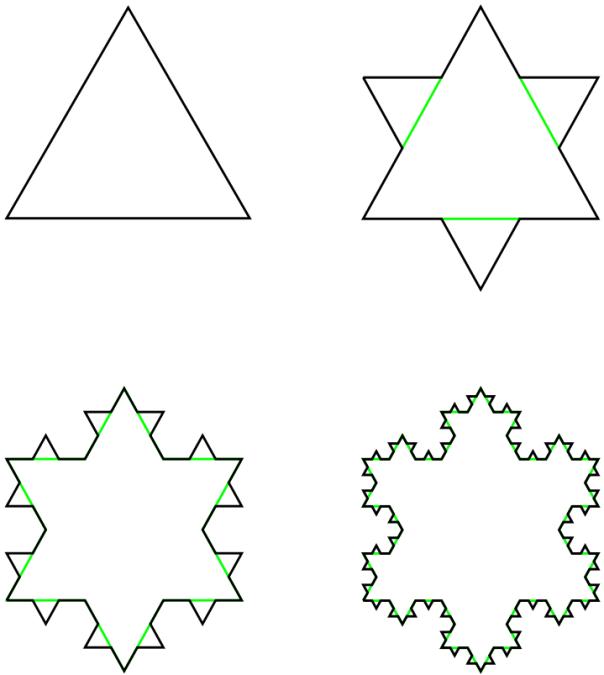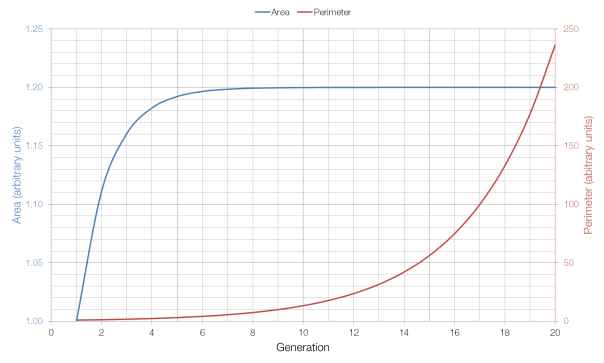Number can be broken up into many groups. Some of these groups have specific uses (for example, prime numbers are very important in cryptography) and some are just interesting for existing in the first place.
The natural numbers are what you might call “counting numbers”: 1, 2, 3, 4, … . Whether or not zero is included in the natural numbers is a matter of some discussion, and there doesn’t seem to be a consensus either way. The natural numbers does not include the negative integers, as it is not possible to have “minus one apples” or “minus two cars”.
The rational numbers are those that can be expressed as a simple fraction:  . Because $latex q$ can equal one, the rational numbers necessarily include the natural numbers, but also every possible other fraction:
. Because $latex q$ can equal one, the rational numbers necessarily include the natural numbers, but also every possible other fraction:  ,
,  ,
,  and so on. The irrational numbers are those that cannot be expressed as fractions:
and so on. The irrational numbers are those that cannot be expressed as fractions:  ,
,  ,
,  , … and repeat indefinitely after their decimal points.
, … and repeat indefinitely after their decimal points.
The square numbers are those that are the square of an integer: 1, 4, 9, 16, … . The cube numbers are those that are the cube of an integer: 1, 8, 27, 64 … . This process continues with  ,
,  , and so on.
, and so on.
The prime numbers are those that are divisible only by one and themselves: 2, 3, 5, 7, … . The Mersenne primes are those prime numbers that are expressible as  , one less than a power of two: 3, 7, 31, 127, … . Sphenic numbers are the product of three primes: 30, 42, 66, 70, … . The semiprimes are natural numbers that can be expressed as the product of two prime numbers: 4, 6, 9, 10, … . There are also almost primes which are then the product of three primes, four primes, and so on. The composite numbers are those numbers that have a divisor other than one and itself, thus they are the set of numbers that are not prime.
, one less than a power of two: 3, 7, 31, 127, … . Sphenic numbers are the product of three primes: 30, 42, 66, 70, … . The semiprimes are natural numbers that can be expressed as the product of two prime numbers: 4, 6, 9, 10, … . There are also almost primes which are then the product of three primes, four primes, and so on. The composite numbers are those numbers that have a divisor other than one and itself, thus they are the set of numbers that are not prime.
Perfect numbers are numbers that are the sum of their divisors: 6, 28, 496, 8128, … . 6 is a perfect number because the factors of 6 are 1, 2 and 3, and the sum of 1, 2 and 3 is 6, and so on. A number is semiperfect if it is equal to the sum of some of its divisors: 6, 12, 18, 20, … , whereas an untouchable number is a number that cannot be expressed as the sum of the divisors of any number: 2, 5, 52, 88, … . That is, there is no number whose divisors sum to 2, or to 5, or to 52, etc.
Abundant numbers are numbers whose divisors sum to a total greater than itself: 12, 18, 20, 24, … . For example, 12 is abundant because the divisors of 12 are 1, 2, 3, 4 and 6 which sum to 16 (i.e. the abundance of 12 is 4 and its abundancy is 12/4 or 3). Friendly numbers are pairs of numbers with the same abundancy: for example the abundancy of both 30 and 140 is 12/5 and therefore 30 and 140 form a friendly pair. Amicable numbers are pairs of numbers where the sum of the divisors of one number is equal to the other and vice versa. For example, 220 and 284 are amicable because the divisors of 220 add up to 284 and the divisors of 284 add up to 220. This concept can be expanded to the sociable numbers where each is part of a “loop” that arrives back at the first number (i.e. amicable numbers are sociable numbers with a period of two). At the moment there are many known sequences of four amicable numbers, but far fewer with periods longer than this.
Weird numbers are those that are abundant but not semiperfect: 70, 836, 4030, 5830, … . The sum of their divisors is greater than the number itself, but no subset of their divisors add up to the number itself.
There are many, many other groups of numbers. Wikipedia is a good place to start looking for them.

